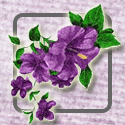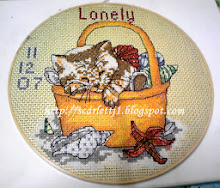" The question is ; Thistle is a kind of ___________ "
" Teacher!What is thistle?"
Thistle is a bla bla bla ( ok dear!Read the article taken from http://en.wikipedia.org/wiki/Thistle below )
Thistle is the common name of a group of flowering plants characterised by leaves with sharp prickles on the margins, mostly in the family Asteraceae. Prickles often occur all over the plant - on surfaces such as those of the stem and flat parts of leaves. These are anadaptation that protects the plant against herbivorous animals, discouraging them from feeding on the plant. Typically, an involucre with a clasping shape of a cup or urn subtends each of a thistle's flowerheads.
The term thistle is sometimes taken to mean exactly those plants in the tribe Cynareae(synonym: Cardueae)[1], especially the genera Carduus, Cirsium, and Onopordum[2]. However, plants outside this tribe are sometimes called thistles, and if this is done thistles would form a polyphyletic group.
Taxa
Genera in the Asteraceae with the word thistle often used in their common names include:
- Arctium – Burdock
- Carduus – Musk Thistle and others
- Carlina – Carline Thistle
- Centaurea – Star Thistle
- Cicerbita – Sow Thistle
- Cirsium – Common Thistle, Field Thistle and others
- Cnicus – Blessed Thistle
- Cynara – Artichokes, Cardoon
- Echinops – Globethistle
- Notobasis – Syrian thistle
- Onopordum – Cotton Thistle, also known as Scots or Scotch Thistle
- Scolymus – Golden Thistle or Oyster Thistle
- Silybum – Milk Thistle
- Sonchus – Sow Thistle
Plants in families other than Asteraceae which are sometimes called thistle include:
- Salsola – Saltwort, Tumbleweed, or Russian Thistle (family Chenopodiaceae)
Heraldry
In the language of flowers, the thistle (like the burr) is an ancient Celtic symbol of nobility of character as well as of birth, for the wounding or provocation of a thistle yields punishment. For this reason the thistle is the symbol of the Order of the Thistle, a high chivalric order of Scotland.
Another story is that a bare foot Viking attacker stepped on one at night and cried out, so alerting the defenders of a Scottish castle.[3] Whatever the justification, the national flower of Scotland is the thistle. It is found in many Scottish symbols and as the name of several Scottish footballclubs. Carnegie Mellon University features the thistle in its crest.
Place names
Carduus is the Latin term for a thistle (hence cardoon), and Cardonnacum is the Latin word for a place with thistles. This is believed to be the origin of name of the Burgundy village of Chardonnay, Saône-et-Loire, which in turn is thought to be the home of the famous Chardonnay grape variety.
Ecology
Thistle flowers, along with bugle and brambles flowers, are favourite nectar sources of the Pearl-bordered Fritillary, Small Pearl-bordered Fritillary, High Brown Fritillary, and Dark Green Fritillary butterflies.[4] Thistles (and thistle-seed feeders) also attract the North American goldfinch.
Some thistles (for example Cirsium vulgare, native to Eurasia), have been widely introduced outside their native range.[5] Control measures include Trichosirocalus weevils, but a problem with this approach, at least in North America, is that the introduced weevils may affect native thistles at least as much as the desired targets.[6]
Weed removal
Weed removal
As a weed, thistles are sometimes thought to be difficult to remove, as they will grow back if cut. However, covering the cut stem with plain table salt will kill the root.
Literary references
Hugh MacDiarmid's poem A Drunk Man Looks at the Thistle is an extended meditation on themes which are in part derived from the position of the plant in secular Scottish iconography.
Nicholas Sayre and the Creature in the Case, Garth Nix's novella in Across the Wall: A Tale of the Abhorsen and Other Stories, involves a Free Magic creature's weakness to be a thistle.
The thistle also features in the song The Thistle o' Scotland which uses the plant as a humorous metaphor for the prickly determinations of Scots - Wha daur meddle wi' me! which is the Scots translation of the motto, Nemo me impune lacessit.














































1 comments:
Yes, correctly.
Post a Comment